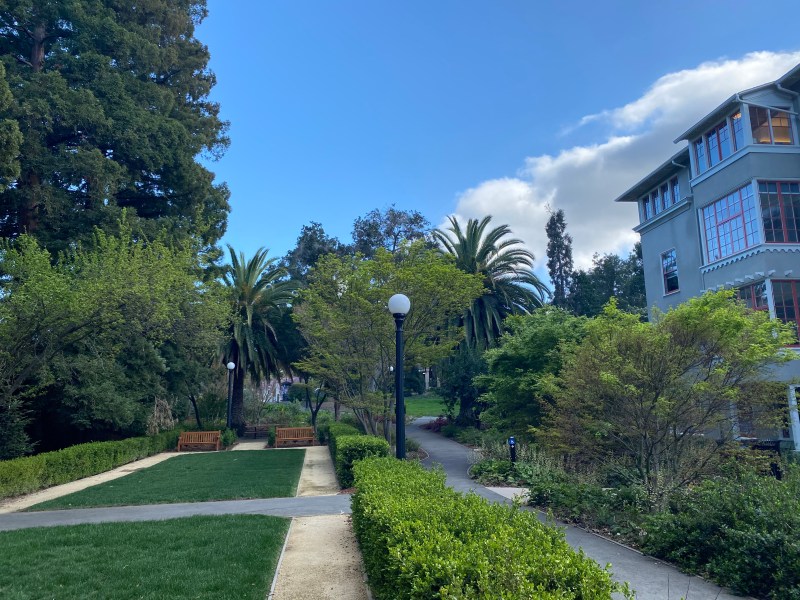The coronavirus pandemic is going to push the campus into a mental health crisis. In a recent poll from Kaiser Family Foundation, 45% of adults in the United States reported that their mental health has been negatively impacted due to worry and stress over the virus.
Being cooped up at home has reminded us just how nice it was to be able to switch between different spaces. While there is no certainty what the fall quarter will look like on campus, mental health will undoubtedly be an important concern. Improving the availability of services such as counseling sessions and increasing students’ awareness of resources are undeniably important. However, these changes take time and are constrained by the number of available counselors. In the meantime, improving the physical environment on campus can have an immediate and lasting impact on students’ mental well-being.
In early 2019, I conducted a pilot project on campus to assess Stanford graduate student mental health using the Stanford Discovery Tool. This was part of the Our Voice initiative, which is led by Dr. Abby King and empowers community members to drive change in their local environments (a video description of the project can be found here). Using the Discovery Tool mobile app, “citizen scientists” document features of their communities that impact their ability to lead healthy lives. They then review their own findings, prioritize areas for change and mobilize to promote improvements that will support community health.
The purpose of my pilot study was to engage Stanford graduate students in assessing features of the Stanford campus that positively and negatively affect the mental health and well-being of graduate students. A total of seven graduate students (two female and five male) representing Ph.D., masters’ and professional programs participated in this project.
Participants completed a campus walk, and during the post-walk meetings, they worked together to identify common themes of the local built environment that had an impact on their mental well-being. In a facilitated process the participants discussed and prioritized these themes based on their feasibility and importance.
From the discussions, it became clear that students recognize the importance of thoughtful campus design in their overall experience. The main theme that ranked highest for importance and feasibility was increasing spaces on campus that can be used for non-academic activities.
Students thought of having non-academic spaces as a way to find purpose outside of their academic endeavors. This makes a lot of sense and will be even more important during the coronavirus pandemic. Dedicating spaces to enjoy other activities and forget about the stress and uncertainties in our lives can be incredibly relaxing and beneficial. Some examples students mentioned during post-walk meetings included designating “no homework” spaces on campus for activities such as crafts and games, and having more free outdoor music events.
The University’s focus so far has been bringing students back to the classroom safely. Travel outside of the local area will be restricted: the University’s latest announcement said “we’ll likely ask students not to travel outside the local area while they are enrolled on campus, or otherwise self-isolate upon their return.” More than ever, students who are stuck on campus will want an escape from their dorms and classrooms. There is no better time to re-think how the built environment can be improved to enhance students’ well-being.
In the coming year, we will need to rely on the University and on each other to enforce physical distancing. But we should not be afraid of allocating more spaces for non-academic activities. One idea is to make more spaces suitable for solitary activities. This can be more benches outside for reading and doodling and more outdoor fitness equipment for those who want to avoid the gym. We are lucky that Stanford has so much green space. Right now is the perfect time to increase the number of free outdoor events and activities for students as long as the number is limited to permit physical distancing. Yoga classes and free concerts are perfect activities for being in a social environment while also keeping distance. And lastly, moderate contact reduction policies should be examined for their benefits and limitations. Students come to campus looking to build meaningful relationships. Having a strong support network is crucial for mental health so finding ways to strategically reduce contact is favorable to complete isolation. For example, forming social bubbles and restricting contact to within this bubble as suggested in this Nature paper could be a short-term solution to lessen the psychological burdens of this pandemic.
Improvements in our built environment will not solve the root causes of increasing mental health concerns among college students. However, the mental health epidemic on campus is a multi-faceted issue that requires a multi-pronged approach. It’s time for us to think creatively about now to make the campus experience rewarding and healthy for students. Every small win matters, especially in this pandemic.
Contact Simei (Amy) Li at amysli ‘at’ alumni.stanford.edu.
The Daily is committed to publishing a diversity of op-eds and letters to the editor. We’d love to hear your thoughts. Email letters to the editor to eic ‘at’ stanforddaily.com and op-ed submissions to opinions ‘at’ stanforddaily.com.
